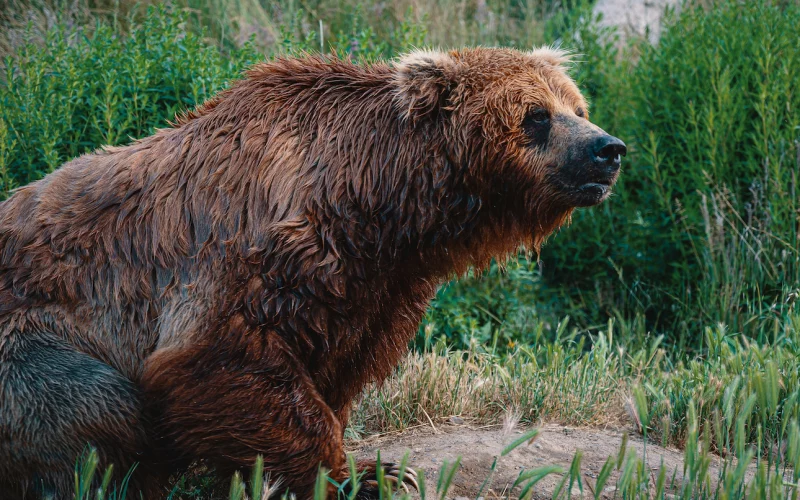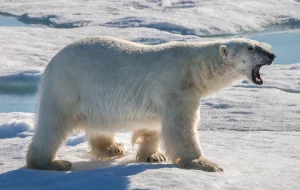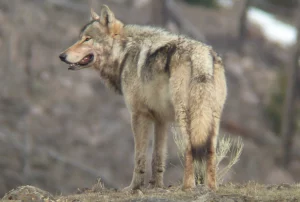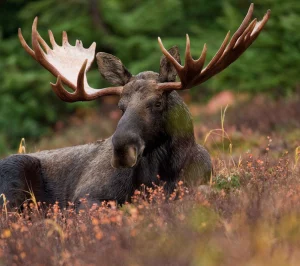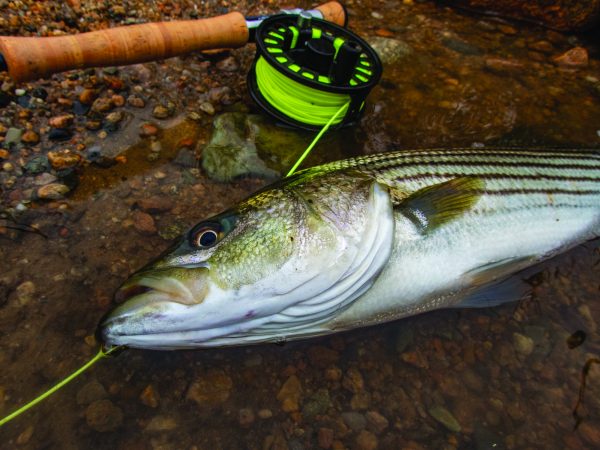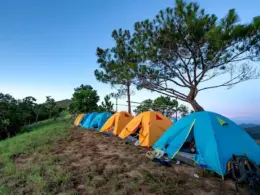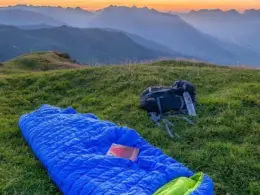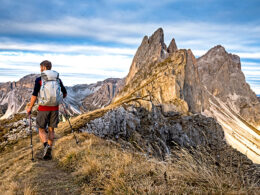For many of us, a weekend getaway in the great outdoors is the perfect way to unwind and connect with nature. But while our National Parks are full of beautiful scenery and stunning wildlife, it’s important to remember that these animals are still… well, wild.
To fully enjoy our natural surroundings, it’s essential to take steps to protect ourselves from any potential dangers. Here are some tips and tricks for keeping yourself safe from the most common wild animals you might encounter during your outdoor adventures.
Table of Contents
General Strategies to Keep the Wild Animals Away
Embracing the wilderness involves sharing the landscape with creatures of all shapes and sizes. It’s crucial to respect their habitats to ensure a peaceful co-existence. You must have effective, field-tested strategies to deter wild animals from your campsite or hiking path.
Remember, the goal is not to cause harm but to establish boundaries that keep both you and the animals safe. Here are the top essential prevention measures to keep the wild, wild, and your camping or hiking experience enjoyable and safe.
- Store your food and garbage in airtight containers and hang them from a tree at least 12 feet above the ground.
- Avoid cooking and eating in areas where animals are known to frequent.
- Set up camp at least 100 yards away from areas where you cook and eat.
- Familiarize yourself with signs of animal activity in your campsite, such as tracks and scat.
- Bring bear spray, a whistle, and any other tools or equipment that may help deter animals.
- Most animal species hate the sound of metal. If threatened, clank a metal spoon on a cup or other item to create a foreign sound that may deter them.
Several everyday camping items can be utilized as deterrents for wildlife encounters. Your campfire, for example, can scare off many animals, while a flashlight can disorient and blind them at night.
A loud, unexpected sound from an air horn can startle and scare off animals. Even pots and pans can be clanged together to create noise.
Lastly, a sturdy hiking stick can not only assist in hiking but also serve as a barrier between you and an approaching animal.
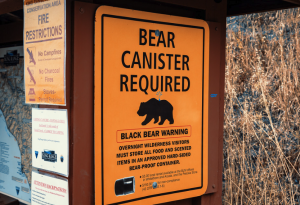
Bears (Black Bears, Grizzlies, and Polar Bears)
Bears, though awe-inspiring, pose a notable concern for adventurers due to their size, strength, and potential for unpredictability when confronted by humans. By understanding their behavior and adopting appropriate precautions, interactions can be managed safely.
Let’s start by focusing on black bears, the most commonly encountered bear species in North America.
Black Bears
Black bears are one of the most common types of bears in North America, and they’re known for being relatively timid around humans. That being said, it’s important to keep your distance and make noise when hiking in their territory, as surprising them could lead to an attack.
If you do encounter a black bear, make yourself look as big as possible and make loud noises (clapping, shouting, etc.) to scare it away.
Black bears, primarily solitary animals, typically avoid human interaction. They usually retreat when encountering people, unless they are habituated to human activities or conditioned to human food.
Habituated bears lose their natural fear of humans and may become aggressive or bold, putting both parties at risk. Such bears often lurk in areas where food or garbage is readily available, including campgrounds or residential areas.
It’s critical to note that while attacks are rare, they can occur, particularly if a bear feels threatened or if a mother bear is protecting her cubs.
Grizzlies
Grizzly bears are larger and more aggressive than black bears and are typically found in the Western US and Canada. If you’re in grizzly territory, it’s important to carry bear spray and know how to use it effectively.
Keep your food and garbage in bear-proof containers, and make sure to store your tent and sleeping area at least 100 yards away from where you cook and eat.
In the event of a grizzly bear attack, use your bear spray. Aim slightly down since the cloud will rise. If the bear makes contact, protect your chest and abdomen by falling onto the ground face-down and clasping your hands behind your neck.
Remain still and silent, playing dead until the bear loses interest and leaves.
Avoid direct eye contact and abrupt movements. Remember, this advice specifically applies to grizzly bear encounters and not to black bear interactions.
Polar Bears
Polar bears are typically found in the Arctic and are notorious for their aggression towards humans. If you’re planning a trip to this region, make sure to do your research and book with a reputable tour company.
If you do encounter a polar bear, make yourself look large and make lots of noise to scare it away. Never run away from a polar bear, as they are faster than humans.
If a polar bear attacks, use deterrents like bear spray or flare guns. If no deterrents are available, fight back using anything at hand. Aim for the bear’s sensitive areas: eyes, nose, or ears.
Avoid playing dead with polar bears, unlike grizzly encounters, as they’re likely to view you as prey.
How To Use Bear Spray Properly
Bear spray is a crucial tool when venturing into bear territory. It is designed to deter aggressive or charging bears and give you a chance to retreat to safety.
Here is a step-by-step guide on how to use bear spray:
- Hold the canister firmly: Use both hands to get a firm grip on the bear spray canister.
- Remove the safety clip: Bear spray cans typically come with safety clips to prevent accidental discharge. Remove this before use.
- Aim slightly downward: Wild winds can affect the direction of the spray, so aim slightly downward and towards the approaching bear.
- Spray in short bursts: This provides a cloud effect, creating a barrier between you and the bear.
Bear spray typically has an expiration date printed on the canister. Ensure you check this before your expedition. Expired spray may not discharge properly and the active ingredients might not be effective.
A standard can of bear spray has approximately 7-9 seconds of total spraying time. Use it judiciously, as a second burst might be necessary if the bear continues to approach.
Remember, bear spray is a deterrent, not a guarantee of safety. Always prioritize avoiding bear encounters where possible.
Wolves
Wolves are typically shy and avoid humans, but it’s still important to keep your distance if you encounter one. Make noise to let them know you’re there, and avoid turning your back on them or running away.
If a wolf approaches you, make yourself look as big as possible and yell or use bear spray to deter them. Familiarize yourself with signs of wolf behavior, such as the “play bow” or yipping, which can indicate a friendly approach.
Contrary to popular belief, wolf attacks on humans are remarkably infrequent. Wolves are naturally averse to human interaction and rarely pose a direct threat.
In fact, according to the International Wolf Center, there have been only two recorded fatalities due to wolf attacks in North America in the past century.
Mountain Lions
Mountain lions are solitary predators that are typically active at dawn and dusk. If you’re hiking or camping in mountain lion territory, make sure to keep your children and pets close by, as they are viewed as easy prey.
If you encounter a mountain lion, make yourself look big and talk loudly to deter them. Never run away from a mountain lion, as this may trigger their instinct to chase.
While mountain lion attacks on humans are extremely rare, they are not unheard of. According to Colorado Parks and Wildlife, since 1990, there have been 22 mountain lion attacks on humans in the state of Colorado, with three resulting in fatalities.
Moose
Moose are typically found in forested areas and are known for their aggressive behavior during mating season (September and October). If you’re in moose territory, make sure to keep your distance and give them plenty of space.
If a moose charges you, run in a zig-zag pattern to confuse them. curl up into a ball and play dead until they leave if you get knocked down.
Despite popular misconceptions, moose-human encounters can potentially be dangerous. Moose are known to be more aggressive towards humans than wolves or mountain lions, particularly during the fall mating season.
According to the Alaska Department of Fish and Game, they are responsible for more injuries to people than bears in Alaska. Moose attacks have resulted in injuries, and in atypical cases, human deaths.
Elk
Elk are typically found in open meadows and are known for their aggressive behavior during mating season (September and October). If you’re in elk territory, make sure to keep your distance and give them plenty of space. If an elk charges you, run in a zig-zag pattern to avoid getting hit by their antlers.
If you’re knocked down, try to get back up and climb a tree or get to a safe area as quickly as possible.
Elk encounters can turn perilous if not dealt with caution. They are known to exhibit aggressive behavior, especially during mating season.
Respect the Wildlife by Keeping your Distance
While encountering wild animals can be a thrilling experience, it’s important to always prioritize your safety and the safety of those around you. By taking the necessary precautions and being prepared for any potential dangers, you can fully enjoy your outdoor adventures.
Staying safe in the wilderness is a shared responsibility. Your actions can influence not only your safety but also the wildlife’s well-being. Remember, we are visitors in their homes. Out there, let’s be respectful guests, tread lightly, and leave no trace.

